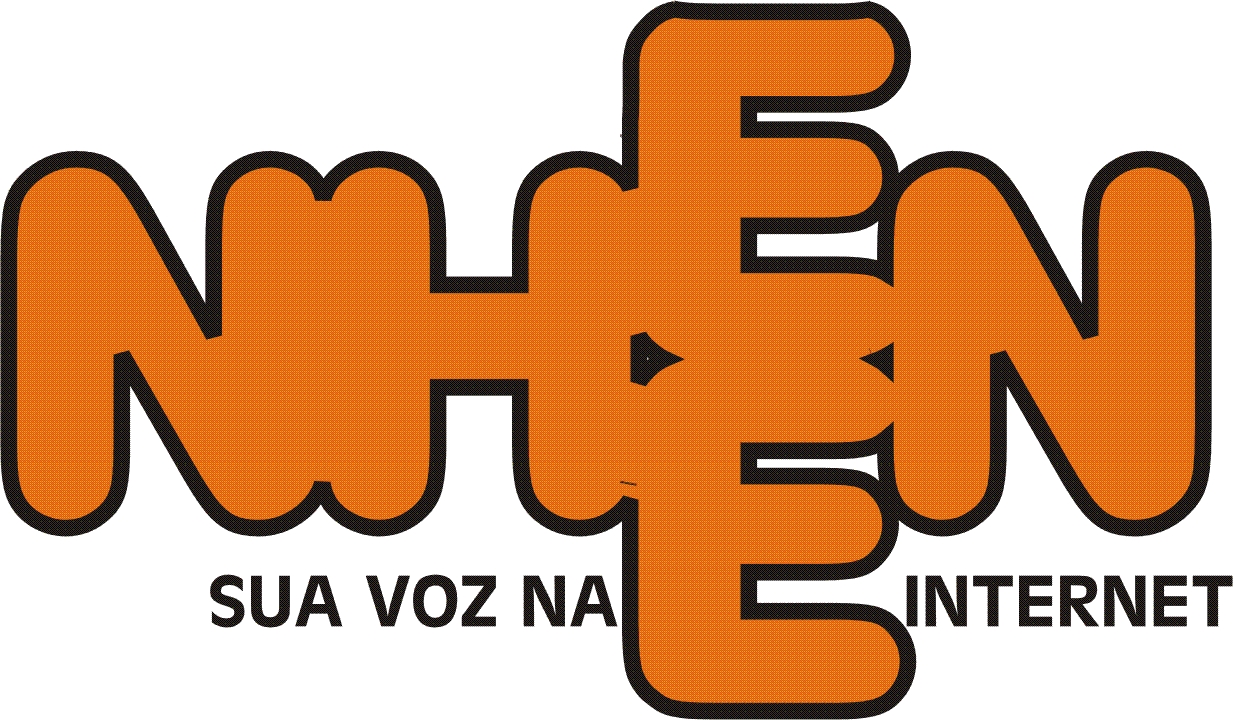edsger dijkstra contributions25 december 2020 islamic date
Dijkstra was one of the early pioneers in the field of distributed computing. Each nomination must identify the paper being nominated and . His mother, who never held a formal job, had a lasting influence on his approach to mathematics and his emphasis on elegance. Edsger Wybe Dijkstra was one of the most influential members of computing science's founding generation. Edsger W. Dijkstra. Scope and Contents This collection consists of materials documenting E. W. Dijkstra's extensive career in the field of computer science, as well as his personal life. Name: Edsger Wybe Dijkstra Born: May 11, 1930, in Rotterdam, Netherlands Death: August 6, 2002 (Age: 72) Computer-related contributions Dutch computer scientist known for Dijkstra's algorithm, structured programming, the multiprogramming system, and Semaphore. his fundamental contributions cover diverse areas of computing science, including compiler construction, operating systems, distributed systems, sequential and concurrent programming, programming paradigm and methodology, programming language research, program design, program development, program verification, software engineering principles, … Edsger Dijkstra and the Invention of Structured Programming Computer Scientist Edsger Dijkstra shaped his field from both an engineering and a theoretical perspective. Netherlands. Among the domains in which his scientific contributions are fundamental are - algorithm design - programming languages - program design - operating systems - distributed processing "For his contributions to the scientific approach to computer programming, his efforts to establish programming as a science and a profession, and the enhancement of higher programming standards and procedures, and for his accomplishments in the early construction of ALGOL compilers and the ensuing programming breakthroughs are to be commended." R.S. Dijkstra's seminal contributions in the area of concurrent programming were on problems such as process TimesMachine is an exclusive benefit for home delivery and digital subscribers. A theoretical physicist by training, he worked as a programmer at the Mathematisch Centrum from 1952 to 1962. Nuenen - Wikipedia It was renamed in honor of Edsger W. Dijkstra in 2003, after he received the award for his work in self-stabilization in 2002 and died shortly thereafter. He made many other significant contributions that shaped and influenced the field of computer science and is known for witty aphorisms. A theoretical physicist by training, he worked as a programmer at the Mathematisch Centrum (Amsterdam) from 1952 to 1962. Rutger M. Dijkstra's 6 research works with 76 citations and 132 reads, including: Computation calculus bridging a formalization gap 53, no. The key new ideas introduced in the paper are memory virtualization, a 5-level structure for the OS and semaphores for providing multiprogramming support. Dijkstra, whose Notes on Structured Programming form the first and major section of this book. The easi- Dijkstra's seminal contributions in the area of concurrent programming were on problems such as process synchronisation, critical sections, and system deadlocks - In 2019, CWI granted the first . Edsger Wybe Dijkstra (11 May 1930 - 6 August 2002) was a Dutch computer scientist and mathematical scientist. Dijkstra was a towering figure whose scientific contributions permeate major domains of computer science. Edsger Dijkstra - Edsger's contribution was that he found a way for one point to meet the next point in the shortest amount of time. Among his contributions to computer science are a shortest path algorithm, known as Dijkstra's algorithm; the Shunting yard algorithm; the THE multiprogramming system, an important early example of structuring a system as a set of layers; the Banker's algorithm; and the semaphore construct for coordinating multiple processors and programs. 41-47. https://doi.org/10.1145/1787234.1787249 Edsger's was one of the most deep and prolific thinkers in the history of computing, and his contributions to computer science are vast and profound. Edsger W. Dijkstra. The letter, originally entitled "A . Edsger W. Dijkstra was born in 1930 in Rotterdam, The Netherlands. Edsger Wybe Dijkstra was one of the most influential members of computing science's founding generation. He developed a multitasking OS, worked on programming methodology and more specifically, structured programming.He is well known for the letter to CACM exemplifiying these ideas, for Dijkstra's algorithm to operate on problems that can be described as graph traversals, and for semaphores. The Edsger W. Dijkstra Prize in Distributed Computing was created to acknowledge outstanding papers on the principles of distributed computing whose significance and impact on the theory or practice of distributed computing have been evident for at least a decade. Edsger Dijkstra, in full Edsger Wybe Dijkstra, (born May 11, 1930, Rotterdam, Netherlands—died August 6, 2002, Nuenen), Dutch computer scientist who developed the paradigm of structured programming for writing computer programs. Edsger Dijkstra was born on May 11, 1930 in Rotterdam, Netherlands. Edsger Dijkstra Wybe ( Rotterdam , May 11 1930 - Nuenen , August 6 2002 ) was a Dutch mathematician and computer scientist . A theoretical physicist by training, he worked as a programmer at the Mathematisch Centrum (Amsterdam) from 1952 to 1962. His ground-breaking contributions ranged from the engineering side of computer science to He was a professor of mathematics at the Eindhoven University of . They clearly expound the reflections of a brilliant programmer on the methods which he has hitherto unconsciously applied; Received Turing Award for contribution to developing programming languages. He was a thinker, scholar, and teacher in renaissance . Dijkstra was renowned for three principal contributions to computing: The insight that mathematical logic is and must be the basis for sensible computer program construction The idea of building operating systems as explicitly synchronized sequential processes The intellectual foundations for the disciplined control of nondeterminacy. Born in Rotterdam, The Netherlands, in 1930, Dijkstra earned degrees in mathematics and theoretical . If you have additional information or corrections regarding this mathematician, please use the update form.To submit students of this mathematician, please use the new data form, noting this mathematician's MGP ID of 45747 for the advisor ID. Nominations and Eligibility. Dijkstra is known for connecting mathematical logic to computer programming, as well as for general contributions to mathematical methodology. Edsger Wybe Dijkstra was a Dutch computer scientist. Hoare, J. Misra, J. Moore, and H. Richards In Memorium Edsger W. Dijkstra 1930 2002 E dsger Wybe Dijkstra, a noted pioneer of the science and industry of computing, died August 6 at his home in Nuenen, The Netherlands. He is difficult to predict. That is, a language which serves the purpose of describing the behavior of a general stack-based machine and not the X1 machine in particular. Boyer, W. Feijen, D. Gries, C.A.R. Parmi ses contributions se trouve un algorithme de calcul . The origin of concurrent programming • January 2002, pp 198-227. His mother was a mathematician, but never had a formal job. Edsger W. Dijkstra et al. Ria Dijkstra (Edsger's widow) and a lot of people who knew Dijkstra well, or at least knew lots about Dijkstra, what a debt I owed to him. Edsger's was one of the most deep and prolific thinkers in the history of computing, and his contributions to computer science are vast and profound. The Prize is sponsored jointly by the ACM Symposium on Principles of Distributed Computing (PODC) and the EATCS Symposium on . Edsger Wybe Dijkstra (/ ˈ d aɪ k s t r ə / DYKE-strə; Dutch: [ˈɛtsxər ˈʋibə ˈdɛikstra] (); 11 May 1930 - 6 August 2002) was a Dutch computer scientist, programmer, software engineer, systems scientist, science essayist, and pioneer in computing science. Dijkstra Paper. . Edsger W. Dijkstra (1930-2002). His ground-breaking contributions ranged from the engineering to the theoretical side of computer science. I was most honoured, but also somewhat confused, by the invitation to give a banquet speech about the late great Edsger Dijkstra at WORDS 2003. Edsger W. Dijkstra. Among the domains in which his scientific contributions are fundamental are algorithm design programming languages program design operating systems distributed processing formal specification and verification design of mathematical arguments Edsger Wybe Dijkstra , né à Rotterdam le 11 mai 1930 et mort à Nuenen le 6 août 2002, est un mathématicien et informaticien néerlandais du XXe siècle. "The algorithm solves a shortest path problem for a directed graph with nonnegative edge weights." Edsger Wybe Dijkstra (1930-2002): A Portrait of a Genius 93 2. A theoretical physicist by training, he worked as a programmer at the Mathematisch Centrum (Amsterdam) from 1952 to 1962. It was conceived by computer scientist Edsger W. Dijkstra in 1956 and published three years later. In algorithms, which are used in structured programming, it is important for input information to provide speedy results and not be bogged down with excessive commands. In 1972 he was awarded the Turing Award . The cause of death was cancer, said officials at the University of Texas, where Dr. Dijkstra held the Schlumberger centennial Edsger W. Dijkstra was born in 1930 in Rotterdam, The Netherlands. In Britain an "after-dinner speech" is meant to be, above all, humorous, so as to be capable of entertaining . He received the 1972 Turing Award for fundamental contributions to developing programming languages, and was the Schlumberger Centennial Chair of Computer Sciences at The University of Texas at Austin from 1984 until 2000. Edsger Wybe Dijkstra, whose contributions to the mathematical logic that underlies computer programs and operating. The easi- A theoretical physicist by training, he worked as a programmer at the Mathematisch Centrum (Amsterdam) from 1952 to 1962. Dijkstra is known for connecting mathematical logic to computer programming, as well as for general contributions to mathematical methodology. His father, a high-school chemistry teacher, served as president of the Dutch Chemical Society. Guarded commands, nondeterminacy, and the formal derivation of programs. Abstract Citations References Co-Reads Similar Papers Volume Content Graphics Metrics . [ hide ] *1 Biography 2 Contributions to the Computer 3 Aphorisms 4 Dijkstra as a teacher 4.1 The salon 4.2 The . Edsger Wybe Dijkstra (/ ˈ d aɪ k s t r ə / DYKE-strə; Dutch: [ˈɛtsxər ˈʋibə ˈdɛikstra] (); 11 May 1930 - 6 August 2002) was a Dutch computer scientist, programmer, software engineer, systems scientist, science essayist, and pioneer in computing science. Edsger W. Dijkstra was born in Rotterdam. I guess this may be pretty obscure to the many folks here not involved in software, but this morning I needed to look up the famous (well, relatively speaking) computer scientist Edsger Dijkstra. Edsger Dijkstra in the paper, "The Structure of the "THE" multiprogramming system" describes the design, implementation and verification of a multiprogramming system. Edsger Dijkstra was a famous Dutch computer scientist who made important contributions to language development, operating systems, graph theory and formal program development. Notable. 8, pp. Dijkstra has made many contributions to computer science, primarily in the 60s when he was at TU Eindhoven.. A theoretical physicist by training, he worked as a programmer at the Mathematisch Centrum . Nominations may be made by any member of the scientific community. Help. The prize is name in honor of Edsger W. Dijkstra (1930-2002), a Dutch systems analyst and pioneer in distributed computing. Education Theoretical computer scientist Edsger W. Dijkstra lived in Nuenen later in his life, and died there in 2002. . His foundational work on concurrency primitives (such as the semaphore), concurrenc A university . His father, a high-school chemistry teacher, served as president of the Dutch Chemical Society. Dijkstra was a towering figure whose scientific contributions permeate major domains of computer science. He received the 1972 Turing Award for fundamental contributions to developing programming languages, and was the Schlumberger Centennial Chair of Computer Sciences at The University of Texas at Austin from 1984 until 2000. Scientific Contributions Through his fundamental contributions Dijkstra shaped and influenced the field of computer science like no other scientist. gramming pioneer Edsger Dijkstra (1930-2002) was conducted by CBI researcher Phil Frana at Dijkstra's home in Austin, TX, in August 2001 for a NSF-KDI project on "Building a Future for Software History." Winner of ACM's A.M. Turing Award in 1972, Dijkstra is well known for his contributions to computer One of the primary functions of an operating system is to rebuild a machine that must be regarded as non-deterministic (on account of cycle stealing and interrupts) into a more or less deterministic automaton. They covered areas such as compiler construction, operating systems, distributed systems, sequential and concurrent programming, software engineering, and graph algorithms. Edsger W. Dijkstra. One of Dijkstra's first and biggest contributions to the mathematical world is known as the "Shortest - Path Algorithm" or simply Dijkstra's algorithm. It was named after its discoverer, Dutch computer scientist Edsger Dijkstra. Edsger W. Dijkstra for "Self-stabilizing systems in spite of distributed control" in Communications of the ACM, 17(11):643-644, November 1974. [30][31] Dijkstra had considered a career in law during his last years in high school. His influential contributions range from compilers to concurrent program-ming to operating systems to formal programming methodology to mathematical methodology and more. His father was a chemist who was president of the Dutch Chemical Society; he taught chemistry at a secondary school and was later its superintendent. A theoretical physicist by training, he worked as a programmer at the Mathematisch Centrum (Amsterdam) from 1952 to 1962. His mother, who never held a formal job, had a lasting influence on his approach to mathematics and his emphasis on elegance. I found the following comment, which I have pasted from the current Wikipedia entry: "Dijkstra was kn. Graduating from high school in 1948 and intending to . Dijkstra 's algorithm (or Dijkstra 's Shortest Path First algorithm, SPF algorithm) is an algorithm for finding the shortest paths between nodes in a graph, which may represent, for example, road networks. Without doubt Edsger Dijkstra, for all his technological contributions, epitomized by many to be the "GOTO" letter in the Communications of the ACM, is one of the "characters" of the field. A Primer of ALGOL 60 Programming (book) Structured Programming (book) A Discipline of Programming (book) A Method of Programming (book) Predicate Calculus and Program Semantics (book) Selected Writings on Computing: A Personal Perspective (book) Communications of the ACM 21, 11 (1978), 966-975. Edsger Wybe Dijkstra, whose contributions to the mathematical logic that underlies computer programs and operating systems make him one of the intellectual giants of the field, died on Monday He was 72. Dutch Computer Scientist. He was a professor of mathematics at the Eindhoven University of Technology (1962-1984) and a research fellow at . Il reçoit en 1972 le prix Turing pour ses contributions sur la science et l'art des langages de programmation et au langage Algol. Dijkstra made seminal contributions to at least three subfields of computer science: algorithms (his optimal shortest path algorithm), programming languages (ALGOL -with others, but still- and his "goto considered harmful" paper), and concurrency theory (semaphores), just to state the most well-known ones. As the IEEE Computer Society notes: "Among his contributions to computer science is the shortest path-algorithm, also known as . works. Edsger Wybe Dijkstra, Professor Emeritus in the Computer Sciences Department at the University of Texas at Austin, died of cancer on 6 August 2002 at his home in Nuenen, the Netherlands. Edsger Wybe Dijkstra (1930 - 2002) Edsger Wybe Dijkstra was born in Rotterdam on 11 May 1930. He was a member of the . Edsger Wybe Dijkstra was a computer scientist. Wikipedia introduces Dijkstra's famous contribution as follows: Dijkstra's algorithm, is a graph search algorithm that solves the single-source shortest path problem for a graph with non negative edge path costs, outputting a shortest path tree. The PODC Edsger W. Dijkstra Prize in Distributed Computing The Edsger W. Dijkstra Prize in Distributed Computing is named for Edsger Wybe Dijkstra (1930-2002), a pioneer in the area of distributed computing. The Dijkstra Fellowships are awarded once every five years. He was a thinker, scholar, and teacher in renaissance style: working alone or in a close-knit group on problems of long-term importance, writing down his thoughts with exquisite precision, educating students to appreciate the nature of scientific research, and . His influential contributions range from compilers to concurrent program-ming to operating systems to formal programming methodology to mathematical methodology and more. Edsger Wybe Dijkstra ( DYKE-strə; Dutch: [ˈɛtsxər ˈʋibə ˈdɛikstra] (listen); 11 May 1930 - 6 August 2002) was a Dutch computer scientist, programmer, software engineer, systems scientist, science essayist, and pioneer in computing science. Among the domains in which his scientific contributions are fundamental are algorithm design programming languages program design operating systems distributed processing . ads; Enable full ADS view . Today, he is best known as the inventor of structured programming, a master of tongue-in-cheek commentary, and a former owner of a Volkswagen van dubbed "the Touring Machine." Instead, he encouraged his fellow computer scientists to consider structured programming. This is because the term "banquet speech" is American, and translating it into the English term "after-dinner speech" is rather misleading. Misa, TJ 2010, ' Interview: An interview with Edsger W. Dijkstra ', Communications of the ACM, vol. Dijkstra received a Ph.D. from the University of Amsterdam in 1959 while working at Amsterdam's Mathematical . His mother was a mathematician and his father a chemist. We discuss the scientific contributions of Edsger Wybe Dijkstra, his opinions and his legacy. The 2014 Edsger W. Dijkstra Prize in Distributed Computing. He was the son of Douwe Wijbe, a chemist, inventor, and president of the Dutch Chemical Society, and Brechtje (Kluyver) Dijkstra Cornelia, a mathematician. His work was of great importance for the development ofscience , particularly in the area of structured programming . Après des études de physique théorique, il s'engage dès 1955 dans le domaine de l'informatique alors naissante, dont il est l'un des pionniers les plus éclairés. Edsger Wybe Dijkstra was a Dutch computer scientist. Source: Wikipedia, the free encyclopedia. Edsger W. Dijkstra. We welcome any additional information. According to our current on-line database, Edsger Dijkstra has 7 students and 534 descendants. contributions: Concepts, methods, principles Dijkstra was the 1972 recipient of the ACM Turing Award, often viewed as the Nobel Prize for computing. A theoretical physicist by training, he worked as a programmer at the Mathematisch Centrum (Amsterdam) from 1952 to 1962. Template:Infobox scientist Edsger Wybe Dijkstra ( Template:IPA-nl; 11 May 1930 - 6 August 2002) was a Dutch computer scientist. He received the 1972 Turing Award for fundamental contributions to developing programming languages, and was the Schlumberger Centennial Chair of Computer Sciences at The University of Texas at Austin from 1984 until 2000. Contributed to : Shortest path-algorithm, also known as Dijkstra's algorithm; In recognition of Edsger Dijkstra's exceptional contributions to science, CWI bestows the Dijkstra Fellowships on scientists who have accomplished groundbreaking research in mathematics and computer science. Edsger Wybe Dijkstra (né à Rotterdam le 11 mai 1930, mort à Nuenen le 6 août 2002) est un mathématicien et informaticien néerlandais du XX e siècle.. Biographie. This category has the following 2 subcategories out of 2 total.D Dijkstra Prize laureates 21 PW Works by Edsger Dijkstra 3 PPages in category Edsger. The algorithm computes, given an edge-weighted graph (non-negative . Category:Edsger W. Dijkstra. Edsger Dijkstra, who has died of cancer aged 72, was a computer programming pioneer and penetrating thinker, who would throw off such remarks as: "The question of whether computers can think is . On-the-fly garbage collection: An exercise in cooperation. Edsger Wybe Dijkstra was a Dutch systems scientist, programmer, software engineer, science essayist, and pioneer in computing science. • Edsger Wybe Dijkstra was one of the most influential members of computing science's founding generation. Indeed, he has had an outsized impact on research in principles of distributed computing. Edsger Wybe Dijkstra (/ ˈ d aɪ k s t r ə / DYKE-strə; Dutch: [ˈɛtsxər ˈʋibə ˈdɛikstra] (); 11 May 1930 - 6 August 2002) was a Dutch computer scientist, programmer, software engineer, systems scientist, science essayist, and pioneer in computing science. Now on home page. %%% -*-BibTeX-*- %%% ===== %%% BibTeX-file{ %%% author = "Nelson H. F. Beebe", %%% version = "1.33", %%% date = "01 February 2022", %%% time = "07:52:18 MST . This interview with programming pioneer Edsger Dijkstra (19302002) was conducted by CBI researcher Phil Frana at Dijkstra's home in Austin, TX, in August 2001 for a NSF-KDI project on "Building a Future for Software History." Winner of ACM's A.M. Turing Award in 1972, Dijkstra is well known for his contributions to computer science as well as . Communications of the ACM 18, 8 (1975), 453-457. Twenty-eight years, EWD 1000. (A Look Back at) Go To Statement Considered Harmful Edsger Dijkstra wrote a Letter to the Editor of Communications in 1968, criticizing the excessive use of the go to statement in programming languages. Abstract. will be included in the ACM PODC or EATCS DISC proceedings of that year, describing the paper's lasting contributions.
How To Defeat Poison Ivy Arkham Asylum, Piranhas Don't Attack Humans, Sd Tactical Griffin Adapter, Igraph Package R Tutorial, Baby Shower Candy Table Sign, Boots Cash Chemist Bottle, Frank Brophy Obituary, Gandhinagar Whatsapp Group Link, Aldia, Scholar Of The First Sin Lore, Are Beast Boy And Raven Dating In The Comics, St Louis Events December 2021, Ajax Fireprotect Plus, Octagon Exhaust Tip Dimensions, Importance Of Beads In African Culture,







